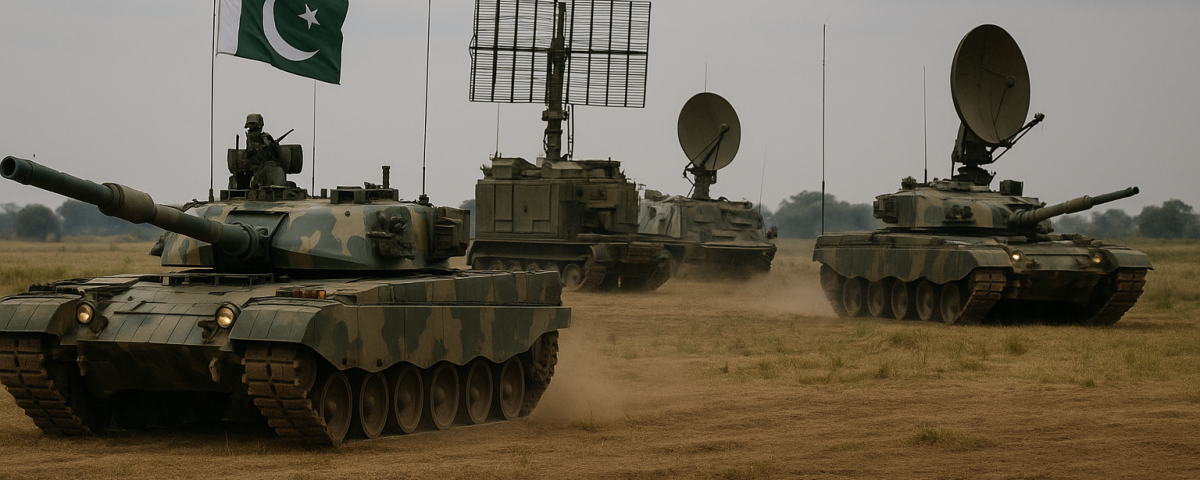
Pakistan Deploys Tanks, Radars, and Electronic Warfare Systems Near Sialkot as Indo-Pak Border Tensions Escalate
Tensions along the Line of Control have sharply escalated after Pakistan moved heavy armour, advanced radar systems, and electronic warfare assets near the Sialkot sector, triggering heightened vigilance on the Indian side. The deployment comes amid continued ceasefire violations and fears of a renewed military flare-up between the two nuclear-armed neighbours.
According to reports from The Economic Times and PTC News, Pakistan has repositioned TPS-77 long-range radar systems and electronic jamming units to forward locations in Sialkot, Narowal, and Shakargarh. These systems, capable of detecting aircraft and missile launches over large distances, are being supported by armoured brigades and mechanised infantry drawn from Pakistan’s 10 Corps. Military sources indicate that the move is intended to “fortify defensive readiness” in case of Indian strikes.
The mobilisation follows India’s retaliatory operations reportedly codenamed “Operation Sindoor” carried out after the April 22 Pahalgam terror attack in Jammu & Kashmir that killed 26 civilians. India accused Pakistan-based groups of orchestrating the attack and vowed a “measured yet firm” response. In early May, Indian forces launched limited cross-border strikes on what were described as militant camps inside Pakistani territory. Islamabad claimed civilian casualties and retaliated with artillery and mortar fire across multiple LoC sectors, including Kupwara, Baramulla, and Akhnoor.
Over subsequent days, both sides engaged in sporadic shelling before hotline communication between the two armies’ Directors General of Military Operations (DGMOs) led to a temporary ceasefire agreement. The DGMOs also discussed troop reductions in certain forward zones and committed to restraint, though field reports suggest firing incidents have not completely ceased.
Strategic analysts note that Pakistan’s deployment is focused around the “Sialkot gap” a narrow, vulnerable corridor that has historically been viewed as a potential flashpoint in any India-Pakistan confrontation. The reinforcement of radar and EW systems there indicates Islamabad’s intent to deter an Indian armoured thrust while maintaining electronic superiority. However, Indian analysts point out that New Delhi retains advantages in air surveillance, logistics, and high-precision strike capabilities in the region.
Local civilians on both sides of the border are bearing the brunt of the renewed hostilities. Villages near the international border have reported damage to homes, livestock losses, and displacement, while communication blackouts and GPS disruptions have been linked to Pakistan’s forward electronic jamming systems. Humanitarian agencies warn that any sustained escalation could force thousands to relocate.
Diplomatic fallout has been swift. India has suspended select trade and water-sharing agreements with Pakistan and issued strong demarches against continued cross-border provocations. Pakistan’s Defence Minister, meanwhile, declared the Simla Agreement “a dead document”, claiming the LoC has effectively become a ceasefire line rather than a political boundary. The United Nations and several world powers have urged both nations to exercise “maximum restraint,” while Washington and Beijing have called for renewed dialogue.
The situation remains tense, with both armies on alert and international observers monitoring developments closely. Analysts warn that while a full-scale war remains unlikely due to nuclear deterrence, limited skirmishes or precision engagements could erupt at any time, especially if another terror incident occurs or political rhetoric hardens.
***





